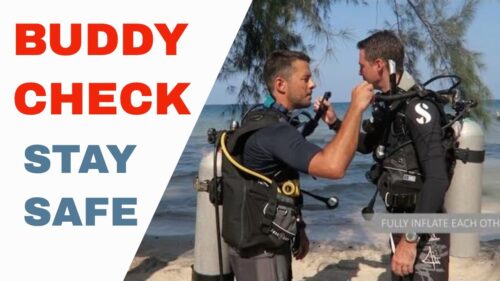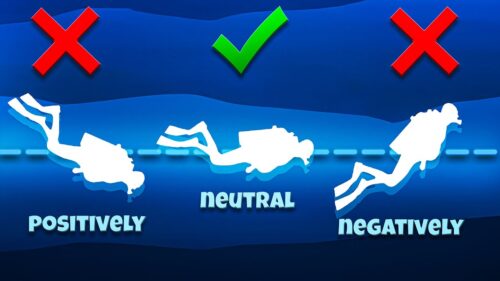Open Water Dive Theory Section 2: Equipping You with In-Water Confidence
If Section 1 of the Open Water theory taught you the “why,” then Section 2 focuses on the “how.” Welcome back to the Amadive guide series!
In this article, we will dive deep into the practical skills and safety protocols that help you become a proactive and confident diver. From cooperating with your buddy to the art of buoyancy control, this is the knowledge that transforms you from a visitor into a part of the underwater world.

1. The Buddy System – Never Dive Alone
This is one of the core philosophies of recreational scuba diving. Your dive buddy is not just someone to share the fun with; they are your safety partner.
- Importance:
- Support: Helping each other gear up and check equipment.
- Safety: Assisting with any problems that may arise underwater.
- Shared Experience: Exploring and sharing magical moments together.
- The Pre-Dive Safety Check: This is a mandatory procedure that you and your buddy must perform together. PADI uses the acronym BWRAF to make it easy to remember.
- B – BCD: Check each other’s BCD. Inflate and deflate it to ensure it functions correctly.
- W – Weights: Check that the weight system (belt or integrated) is secure and properly fitted.
- R – Releases: Check your buddy’s BCD releases and buckles so you know how to operate them in an emergency.
- A – Air: Check that the tank valve is fully open. Take a few breaths from your buddy’s primary and alternate regulators while watching the pressure gauge.
- F – Final OK: Do a final head-to-toe check: mask and fins are on, everything is streamlined and in place. Then, give each other the “OK” signal.
2. Buoyancy Control – The Art of Weightlessness

Buoyancy control is the most important skill that distinguishes a new diver from an experienced one. The goal is to achieve neutral buoyancy, meaning you neither sink nor float, hovering weightlessly like an astronaut.
- Your Two Main Tools:
- The BCD: Used for large adjustments. Add a small burst of air when you want to ascend or slow your descent, and release air when you want to descend.
- Your Lungs: Used for fine-tuning. When you inhale deeply, your body will gently rise. When you exhale fully, you will gently sink.
- Why It’s So Important:
- Protect the Environment: Avoid crashing into and breaking fragile coral or stirring up the seabed.
- Conserve Energy: You don’t have to use your hands or fins to maintain your position.
- Conserve Air: When you’re relaxed and moving less, you breathe more slowly and use less air.
3. Essential Underwater Safety Skills
Here are some common situations and how to handle them—skills you will practice repeatedly in the pool.
- Mask Clearing: It’s common for a little water to get into your mask.
- How to do it: Tilt your head back slightly, press the top frame of the mask against your forehead, and exhale gently through your nose. The air will push the water out from under the bottom seal.
- Regulator Recovery and Clearing: Your regulator might get knocked out of your mouth.
- Recovery: There are two methods: the arm sweep (lean to your right and sweep your arm back to front to find the hose) or the reach-back method (follow the hose from your tank).
- Clearing: Once the regulator is back in your mouth, you can either give a strong exhale to blast the water out or simply press the purge button.
- Communicating with Hand Signals: Since we can’t talk, divers use hand signals. Some basic ones include:
- Thumbs-up: Ascend / End the dive.
- Thumbs-down: Descend.
- “OK” sign (thumb and index finger form a circle): OK / Are you OK?
- Flat hand, wiggling motion: Problem / Something’s wrong.
- Two fingers pointing at your eyes: Look!
Conclusion for Section 2
Mastering the skills in Section 2 will give you confidence and control underwater. From safely checking your buddy to hovering effortlessly among a school of fish, these are the actions that bring the theory to life.
You are now equipped with core safety knowledge. Next, let’s get ready to explore the stage itself.
➡️ Explore Further in Section 3: Understanding the Underwater Environment
